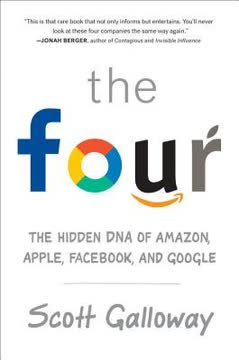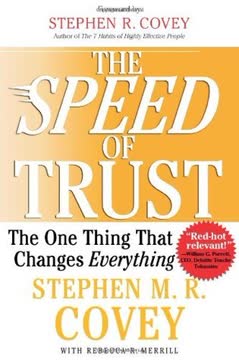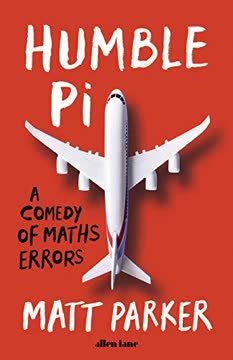Key Takeaways
1. Overcome the productivity paradox: Manage decisions, attention, and energy
It is both easier and harder than ever before to achieve extraordinary productivity and feel accomplished in our lives.
The productivity paradox stems from three challenges in today's world: an overwhelming flow of decisions, unprecedented attacks on our attention, and a drain on our personal mental energy. To overcome this, we must master decision management, attention management, and energy management. This allows us to focus on what's truly important amidst the constant barrage of information and tasks.
- Decision management: Discern between important and urgent tasks
- Attention management: Focus on high-value activities without distraction
- Energy management: Maintain physical and mental stamina for peak performance
By addressing these three areas, we can navigate the modern work environment more effectively, achieving extraordinary productivity and a sense of accomplishment in our daily lives.
2. Act on the important, don't react to the urgent using the Time Matrix
Q2 is the quadrant of extraordinary productivity because here is where you take charge of your own life and do the things that will make a real difference in terms of accomplishment and results.
The Time Matrix is a powerful framework for prioritizing tasks and activities. It categorizes tasks into four quadrants based on their importance and urgency:
- Q1: Important and urgent (crises, pressing problems)
- Q2: Important but not urgent (planning, prevention, relationship building)
- Q3: Urgent but not important (interruptions, unnecessary reports)
- Q4: Not urgent and not important (time-wasters, excessive relaxation)
The key to extraordinary productivity is to focus on Q2 activities. These are the tasks that contribute most to long-term success and personal fulfillment. By consciously choosing to spend more time in Q2, we can reduce the number of Q1 crises, eliminate Q3 distractions, and minimize Q4 time-wasters. This shift requires developing the habit of pausing to clarify and decide on the importance of tasks before acting on them.
3. Go for extraordinary by defining clear roles and goals
Remember, this is not about someone else's definition of extraordinary. It's about yours.
Define your key roles in life and work, then create specific Q2 Role Statements and Q2 Goals for each. This process helps clarify what's truly important to you and provides a framework for making better decisions about where to invest your time and energy.
Steps to go for extraordinary:
- Identify your most important current roles (5-7 maximum)
- Create a Life Wheel to visualize these roles
- Evaluate your performance in each role
- Craft Q2 Role Statements that articulate your vision of success
- Set specific, measurable Q2 Goals using the "From X to Y by When" formula
By aligning your daily actions with these clearly defined roles and goals, you increase the likelihood of achieving extraordinary results and feeling fulfilled in all areas of your life.
4. Schedule the big rocks, don't sort gravel through effective planning
If you spend thirty minutes each week and ten minutes each day in Q2 Planning, you will dramatically increase your ability to be and feel accomplished at the end of every day.
Effective Q2 Planning involves prioritizing important tasks (big rocks) before allowing less important activities (gravel) to fill your schedule. This approach ensures that you focus on high-value activities that contribute to your long-term success.
Key elements of Q2 Planning:
- Master Task List: Maintain a single, trustworthy system for tracking tasks
- Q2 Time Zones: Proactively schedule blocks of time for important activities
- Weekly Q2 Planning (30 minutes):
- Review Roles and Goals
- Schedule the Big Rocks
- Organize the Rest
- Daily Q2 Planning (10 minutes):
- Close Out the Day
- Identify the Few "Must-Dos"
- Organize the Rest
By consistently practicing Q2 Planning, you create a self-reinforcing system that helps you stay focused on what matters most, even amid the daily flood of urgent but less important tasks.
5. Rule your technology, don't let it rule you with the Q2 Process Map
When we live in our Reactive Brain, we do things that take us away from the high-return productivity of Q2, and into the low-return productivity drains of Quadrants 1, 3, and 4.
The Q2 Process Map is a powerful tool for managing the constant flow of incoming information and tasks in our technology-driven world. It helps you make conscious decisions about where to focus your attention and energy, ensuring that you stay in Q2 as much as possible.
Key components of the Q2 Process Map:
- Win Without Fighting: Automate and filter incoming information
- Turn It Into What It Is: Quickly process tasks into your organizational system
- Link to Locate: Connect related information for easy retrieval
Practical tips for ruling your technology:
- Create email rules to automatically sort and prioritize messages
- Use the "Core 4" system to organize information: Appointments, Tasks, Contacts, and Notes/Documents
- Establish clear protocols for communication within your team or organization
- Regularly review and optimize your technology usage to support Q2 activities
By mastering these techniques, you can harness the power of technology to enhance your productivity rather than allowing it to control your time and attention.
6. Fuel your fire, don't burn out by managing your energy
Being conscious and intentional throughout the day takes a lot of energy.
Energy management is crucial for maintaining high productivity and avoiding burnout. By focusing on five key drivers of mental and physical energy, you can sustain your ability to make good decisions and stay focused on important tasks throughout the day.
The 5 Energy Drivers:
- Move: Incorporate regular movement and exercise into your day
- Eat: Consume brain-healthy foods and maintain stable blood sugar levels
- Sleep: Prioritize quality sleep for mental clarity and recovery
- Relax: Practice stress-reduction techniques and schedule regular recovery time
- Connect: Nurture meaningful relationships and social connections
Practical tips for each driver:
- Move: Take frequent breaks to walk or stretch, use a standing desk
- Eat: Choose complex carbohydrates, lean proteins, and healthy fats; stay hydrated
- Sleep: Establish a consistent sleep schedule, create a relaxing bedtime routine
- Relax: Practice mindfulness or meditation, take regular vacations
- Connect: Schedule time for family and friends, engage in meaningful conversations
By consciously managing these energy drivers, you can maintain the mental and physical stamina needed to consistently perform at your best and achieve extraordinary productivity.
7. Create a Q2 culture to transform your organization
When a Q2 culture is in place, the most important things you are trying to achieve just got turbo-charged.
Building a Q2 culture in your organization can dramatically increase productivity and employee engagement. By institutionalizing the principles of the 5 Choices, you can create an environment where people naturally focus on high-value activities and feel more accomplished in their work.
Steps to create a Q2 culture:
- Leadership-Team Orientation: Introduce the 5 Choices to top executives
- Champion-Team Certification: Train internal coaches to facilitate implementation
- Leader Training: Teach managers how to lead their teams in a Q2 way
- Team-Member Training: Introduce the 5 Choices to all employees
- Leadership Accountability: Regular check-ins on implementation progress
- Reassessment: Measure improvements in Q2 time and energy levels
- Sustainment: Ongoing support and reinforcement of Q2 principles
Key behaviors to foster in a Q2 culture:
- Regular Q2 Conversations in team meetings
- Clear Q2 Role Statements and Goals for all employees
- Consistent Weekly and Daily Q2 Planning
- Common technology protocols to reduce distractions
- High-energy behaviors supported by the 5 Energy Drivers
By consistently modeling and reinforcing these behaviors, leaders can create a self-sustaining Q2 culture that drives extraordinary productivity and results throughout the organization.
Last updated:
FAQ
What's "The 5 Choices: The Path to Extraordinary Productivity" about?
- Overview: "The 5 Choices" by Kory Kogon is a guide to improving productivity by making conscious decisions about how to spend your time, attention, and energy.
- Focus on Choices: The book outlines five key choices that help individuals prioritize important tasks over urgent but less important ones.
- Integration of Science: It combines principles of time management with insights from neuroscience to help readers manage their workload effectively.
- Practical Application: The book provides practical tools and strategies to help readers implement these choices in their daily lives.
Why should I read "The 5 Choices: The Path to Extraordinary Productivity"?
- Improve Productivity: The book offers actionable strategies to enhance productivity by focusing on what truly matters.
- Reduce Stress: By learning to prioritize effectively, readers can reduce stress and feel more accomplished at the end of each day.
- Balance Work and Life: It provides insights into balancing professional responsibilities with personal life, leading to greater satisfaction.
- Scientific Backing: The advice is grounded in neuroscience, offering a credible approach to managing time and energy.
What are the key takeaways of "The 5 Choices: The Path to Extraordinary Productivity"?
- Five Key Choices: The book emphasizes five choices: Act on the Important, Go for Extraordinary, Schedule the Big Rocks, Rule Your Technology, and Fuel Your Fire.
- Time Matrix: It introduces the Time Matrix, a tool to categorize tasks based on urgency and importance, helping prioritize effectively.
- Energy Management: The book highlights the importance of managing mental and physical energy to maintain productivity.
- Role and Goal Clarity: It stresses the need for clear roles and goals to guide decision-making and focus efforts on high-impact activities.
What are the best quotes from "The 5 Choices: The Path to Extraordinary Productivity" and what do they mean?
- "Act on the Important, Don’t React to the Urgent": This quote emphasizes the need to focus on tasks that truly matter rather than getting caught up in urgent but less important activities.
- "Go for Extraordinary, Don’t Settle for Ordinary": It encourages readers to aim for high-impact results in their roles and responsibilities.
- "Schedule the Big Rocks, Don’t Sort Gravel": This metaphor suggests prioritizing significant tasks before dealing with minor ones.
- "Rule Your Technology, Don’t Let It Rule You": It highlights the importance of managing technology to prevent it from becoming a distraction.
How does the Time Matrix work in "The 5 Choices: The Path to Extraordinary Productivity"?
- Four Quadrants: The Time Matrix divides tasks into four quadrants based on urgency and importance: Necessity (Q1), Extraordinary Productivity (Q2), Distraction (Q3), and Waste (Q4).
- Focus on Q2: The book advises spending most time in Q2, where tasks are important but not urgent, to achieve extraordinary productivity.
- Avoid Q3 and Q4: It suggests minimizing time in Q3 and Q4, which are filled with distractions and wasteful activities.
- Decision-Making Tool: The Time Matrix helps in making conscious decisions about where to invest time and energy.
What is the significance of "Act on the Important, Don’t React to the Urgent" in "The 5 Choices"?
- Prioritization: This choice emphasizes prioritizing important tasks over urgent but less significant ones to achieve meaningful results.
- Discernment: It involves using discernment to identify tasks that align with long-term goals and values.
- Framework and Process: The book provides a framework (Time Matrix) and a process (Pause-Clarify-Decide) to help make these decisions.
- Reduce Stress: By focusing on important tasks, individuals can reduce stress and increase their sense of accomplishment.
How does "Go for Extraordinary, Don’t Settle for Ordinary" guide readers in "The 5 Choices"?
- Role Clarity: It encourages readers to define their most important roles and what success looks like in each.
- Goal Setting: The book advises setting specific, measurable goals to guide efforts and achieve extraordinary results.
- Motivation and Purpose: It highlights the importance of aligning tasks with personal motivation and purpose to drive productivity.
- Balance and Fulfillment: By aiming for extraordinary outcomes, readers can achieve a balanced and fulfilling life.
What strategies does "The 5 Choices" offer for managing technology effectively?
- Rule Your Technology: The book advises taking control of technology to prevent it from becoming a distraction.
- Email Management: It suggests using rules and filters to automate email management and reduce inbox clutter.
- Core 4 System: The book introduces the Core 4 system to organize appointments, tasks, contacts, and notes efficiently.
- Master Moves: It provides master moves like "Win Without Fighting" and "Turn It Into What It Is" to handle incoming information effectively.
How does "Fuel Your Fire, Don’t Burn Out" contribute to productivity in "The 5 Choices"?
- Energy Management: This choice emphasizes the importance of managing mental and physical energy to maintain productivity.
- Five Energy Drivers: The book identifies five drivers of energy: Move, Eat, Sleep, Relax, and Connect.
- Sustainable Practices: It encourages adopting sustainable practices to prevent burnout and maintain high performance.
- Purpose and Motivation: Aligning tasks with a clear purpose and motivation is highlighted as a key to sustaining energy.
What role do "Roles and Goals" play in "The 5 Choices"?
- Role Identification: The book advises identifying the most important roles in one's life to focus efforts effectively.
- Goal Clarity: Setting clear, specific goals helps guide decision-making and prioritize tasks.
- Alignment with Purpose: Roles and goals should align with personal values and purpose to drive motivation and productivity.
- Regular Assessment: The book suggests regularly assessing roles and goals to ensure they remain relevant and impactful.
How does "The 5 Choices" address the productivity paradox?
- Easier and Harder: The book acknowledges that while technology makes it easier to accomplish tasks, it also creates distractions that make productivity harder.
- Three Challenges: It identifies three challenges: overwhelming decisions, attention under attack, and personal energy crisis.
- Solutions Offered: The 5 Choices provide solutions to these challenges by helping readers prioritize, manage attention, and sustain energy.
- Focus on Q2: By focusing on Q2 activities, readers can overcome the productivity paradox and achieve meaningful results.
What is the "30/10 Promise" in "The 5 Choices"?
- Time Commitment: The 30/10 Promise involves spending 30 minutes each week and 10 minutes each day on Q2 Planning.
- Increased Productivity: This practice is promised to dramatically increase productivity and help individuals feel accomplished.
- Planning Process: It involves reviewing roles and goals, scheduling Big Rocks, and organizing tasks to focus on important activities.
- Regular Practice: By making this a regular practice, readers can maintain focus on high-impact tasks and reduce stress.
Review Summary
The 5 Choices receives generally positive reviews, with readers praising its practical approach to productivity and time management. Many find the book's concepts simple yet effective, particularly the emphasis on prioritizing important tasks over urgent ones. Some reviewers note similarities to Stephen Covey's work and appreciate the book's focus on work-life balance. Critics argue that the content isn't entirely novel and can be overly simplistic. Overall, readers find value in the book's actionable advice for improving productivity and decision-making in both professional and personal contexts.
Similar Books










Download PDF
Download EPUB
.epub digital book format is ideal for reading ebooks on phones, tablets, and e-readers.






